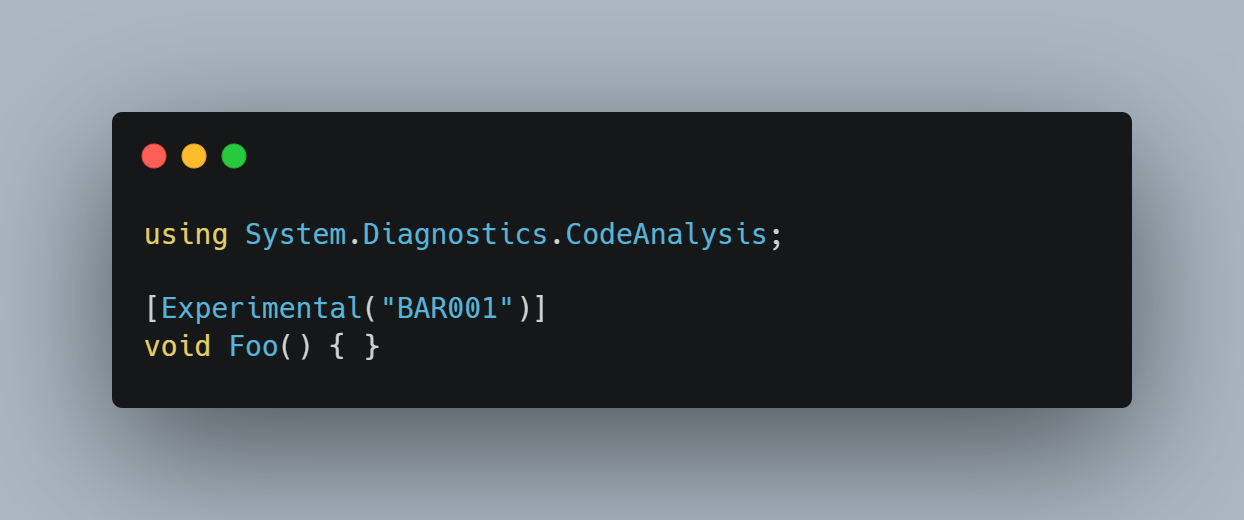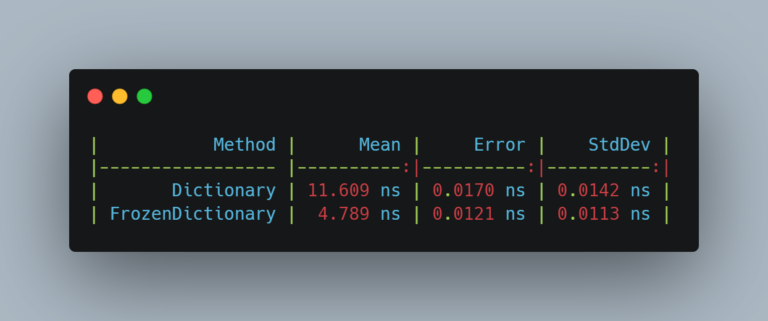C# – How to mark features as experimental
Starting with C# 12, a new ExperimentalAttribute is introduced allowing you to mark types, methods, properties or assemblies as being experimental features. This will trigger a compiler warning during usage which can be disabled using a #pragma tag.
The Experimental attribute requires a diagnosticId parameter to be passed in the constructor. That diagnostic ID will be part of the compiler error message that gets generated whenever the experimental feature is used. Note – you can use the same diagnostic-id in multiple attributes if you wish to.
Important to note: Do not use dashes (-) or other special characters in your diagnosticId as it might break the #pragma syntax and prevent users from disabling the warning. For example, using BAR-001 as a diagnostic id will not allow the warning to be supressed and will trigger a compiler warning in the pragma tag.
CS1696 Single-line comment or end-of-line expected.
You can also specify a UrlFormat within the attribute to guide developers to documentation related to the experimental feature. You can specify either an absolute url, such as https://acme.com/warnings/BAR001, or a generic string-formatter URL (https://acme.com/warnings/{0}) and let the framework do it’s magic.
Let’s look at some examples.
Marking a method as experimental
using System.Diagnostics.CodeAnalysis;
[Experimental("BAR001")]
void Foo() { }
Code language: C# (cs)You simply annotate the method with the Experimental attribute and provide it with a diagnosticId. When a call to Foo() is made, the following compiler warning will be generated:
BAR001 ‘Foo()’ is for evaluation purposes only and is subject to change or removal in future updates. Suppress this diagnostic to proceed.
You can work around this warning using pragma tags:
#pragma warning disable BAR001
Foo();
#pragma warning restore BAR001
Code language: C# (cs)Specifying a link to documentation
As mentioned above, you can specify a link to the documentation using the UrlFormat property of the attribute. This is entirely optional.
[Experimental("BAR001", UrlFormat = "https://acme.com/warnings/{0}")]
void Foo() { }
Code language: C# (cs)Doing so, will make clicking the error codes in Visual Studio take you to the documentation page provided. And in addition to that it will also output the URL part of the diagnostic error message:
BAR-001 ‘Foo()’ is for evaluation purposes only and is subject to change or removal in future updates. Suppress this diagnostic to proceed. (https://acme.com/warnings/BAR-001)
Other usages
The attribute can be used in almost any place that you can imagine. On assemblies, modules, classes, structs, enums, properties, fields, events, you name it. For a complete list of allowed usages we can check it’s definition:
[AttributeUsage(AttributeTargets.Assembly |
AttributeTargets.Module |
AttributeTargets.Class |
AttributeTargets.Struct |
AttributeTargets.Enum |
AttributeTargets.Constructor |
AttributeTargets.Method |
AttributeTargets.Property |
AttributeTargets.Field |
AttributeTargets.Event |
AttributeTargets.Interface |
AttributeTargets.Delegate, Inherited = false)]
public sealed class ExperimentalAttribute : Attribute { ... }
Code language: C# (cs)


One Comment